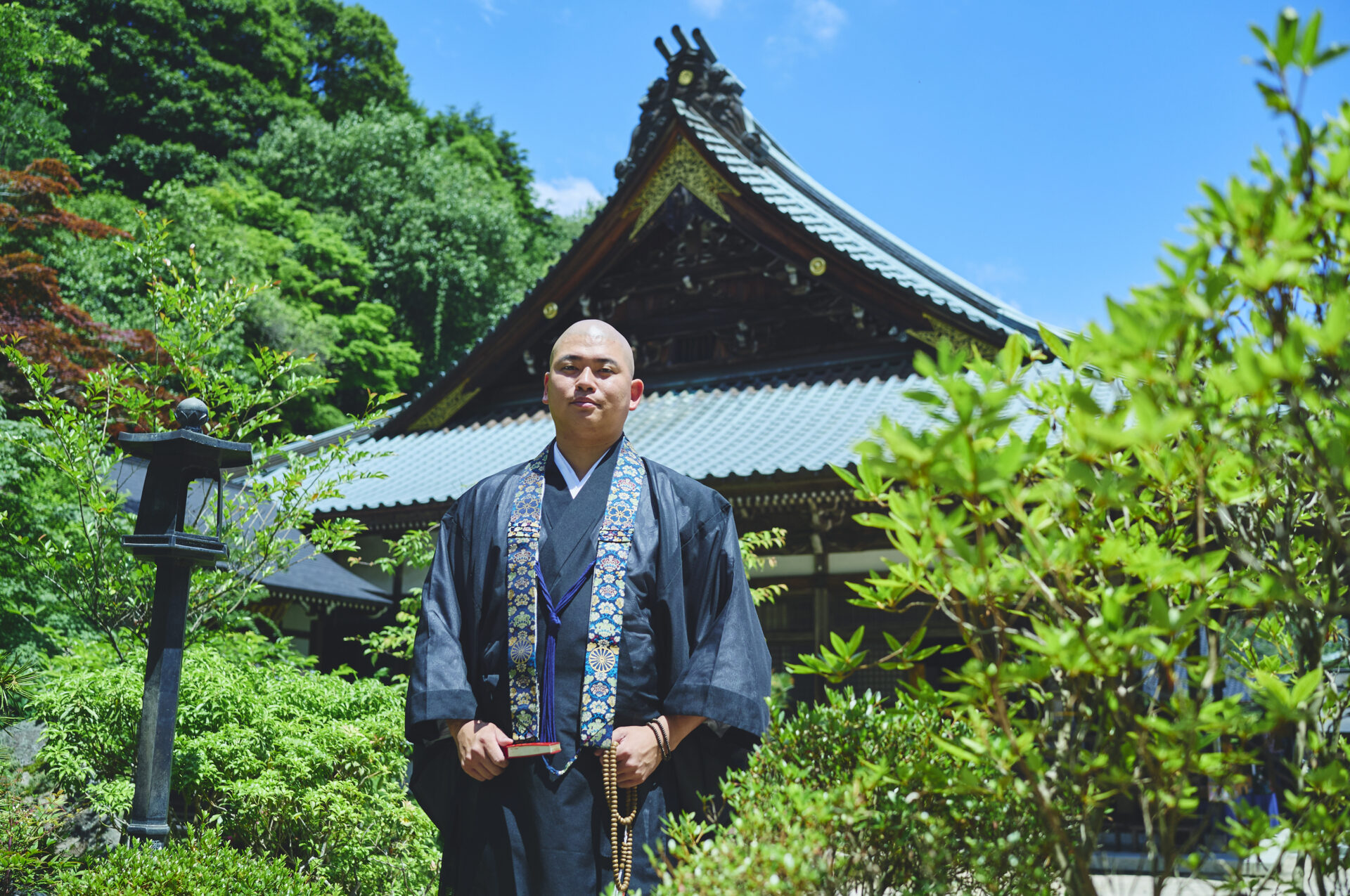
What It Means for Miyajima’s Oldest Temple to Sow Seeds of Connection — How Joining Hands in Prayer Can Lead to World Peace

吉田 大裕
Daiyu Yoshida
Miyajima [Hiroshima]
Daiyu Yoshida
Born in Hatsukaichi City, Hiroshima Prefecture. Raised at Daisho-in Temple, the oldest temple on Miyajima and the head temple of the Shingon Omuro sect. Since 2016, he has served as vice chief priest under his father, the 77th head priest. While deepening his Buddhist practice, he also hosts contemporary art and music events to make the temple a welcoming space where anyone can experience its spiritual atmosphere.
At Daisho-in Temple, the oldest temple on Miyajima and the head temple of the Shingon Omuro sect founded over 1,200 years ago, Vice Chief Priest Daiyu Yoshida was never pressured by his parents to inherit the temple.
But the expectations of those around him told a different story.
As the son of the 77th head priest of a temple with deep historical and spiritual significance, Yoshida wrestled with the weight of legacy. Guided by the teachings of Kobo Daishi (Kukai), founder of Shingon Buddhism, he came to discover the true meaning of the temple’s role — and of prayer itself.
A Temple with Over 1,200 Years of History —Daisho-in, Founded by Kobo Daishi (Kukai)
Miyajima, one of Japan’s Three Most Scenic Spots and a UNESCO World Heritage Site, has long been revered as a sacred island where the land itself is considered divine. Its official name is Itsukushima.
Itsukushima Shrine, founded in 593 AD, was deeply worshipped by powerful historical figures such as Taira no Kiyomori and the Mori clan, who contributed to the construction of its elegant palace-style architecture and vermilion torii gate rising from the sea — a breathtaking sight that continues to captivate visitors today.
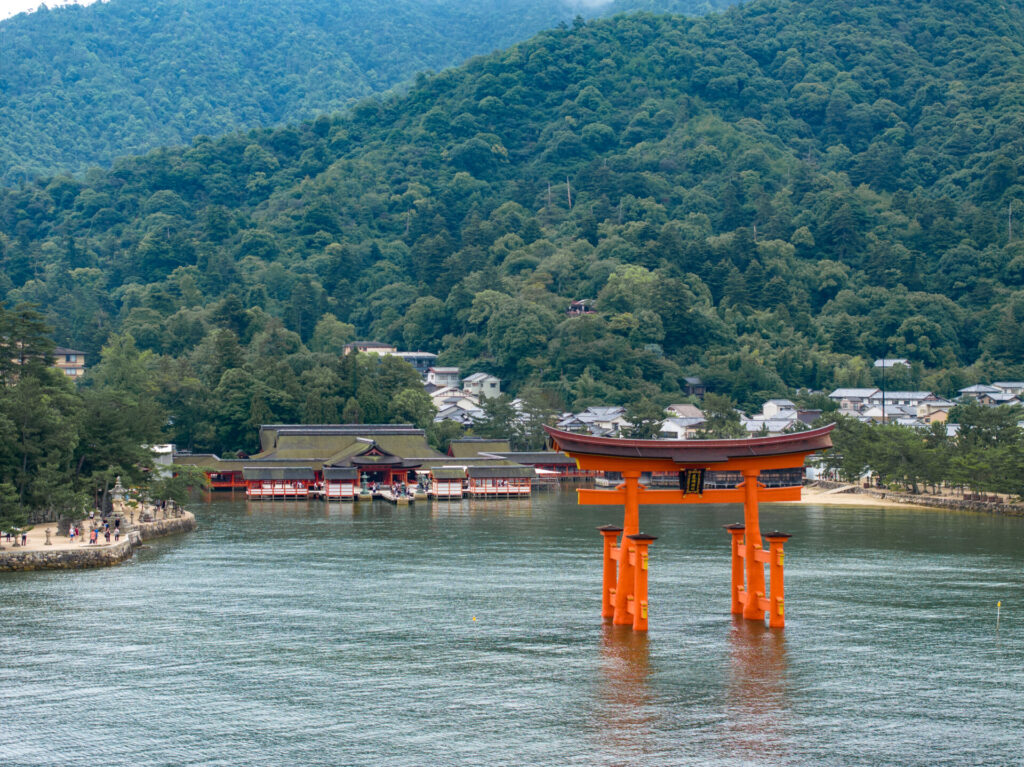
On the island’s sacred mountain, Mount Misen, Kobo Daishi (Kukai), founder of the Shingon sect, is said to have trained in meditation after returning from China, and in 806 AD, he established Daisho-in Temple, the head temple of the Shingon Omuro sect.
Daisho-in, which has coexisted with Itsukushima Shrine since the era of Shinto-Buddhist syncretism, is home to several sacred halls. Among them are the Daishido, dedicated to Kobo Daishi himself; the Kannon-do, enshrining the Eleven-Faced Kannon — the Buddhist counterpart of the shrine’s deity; the Chokugan-do, where the principal deity Fudō Myō-ō (Immovable Wisdom King) is enshrined — the same image Toyotomi Hideyoshi once prayed to before his campaign to Korea; and the Mani-den, where prayers are offered to the three guardian deities of Mount Misen, known as the Sanki Daigongen. Within the Reikado (Hall of the Eternal Flame), the sacred fire lit by Kobo Daishi during his ritual practices has burned continuously for more than 1,200 years — and this same flame was used to light the Peace Flame in Hiroshima’s Peace Memorial Park.
“Daisho-in does not have family-based parishioners like many temples,” Yoshida explains. “Instead, we are a devotional temple, where visitors join us in daily prayers. Of course, we also welcome tourists who come by chance — and for many, it becomes a place to experience a temple’s spiritual atmosphere for the first time.”
As vice chief priest, Yoshida trains under his father while also curating modern art, music, and cultural events that open the temple to all. His goal is simple yet profound: to make Buddhism — and the act of prayer — feel closer to everyday life.
Inheriting a Temple with Centuries of History — Searching for Meaning
Born as the eldest son of Daisho-in, the oldest temple on Miyajima, Daiyu Yoshida speaks with a gentle composure that contrasts with the weight of his lineage.
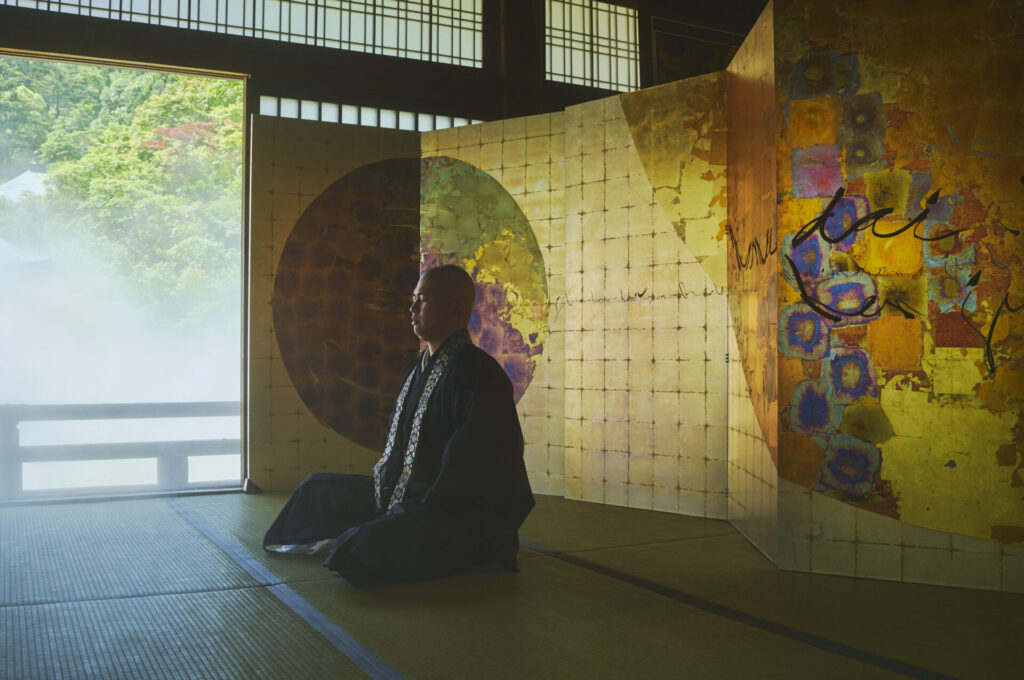
“My parents never once told me I had to inherit the temple,” he recalls. “They always said I was free to live my own life. So I never thought much about ‘taking over.’ It just felt like our house happened to be inside a temple.”
Still, to those around him, the path seemed predetermined. As a child he sometimes wore a monk’s robe for ceremonies, and classmates teased him for not having a shaved head. “Why wasn’t I born into a normal family?” he once wondered.
That question began to change when, at the age of eight, his father told him he would undergo the Tokudo-shiki, the initiation ceremony marking entry into Buddhist training. Without fully understanding its meaning, he accepted—out of love and respect for his grandfather, who had requested it. From then on, offering tea each morning to the temple’s Buddha and to his late grandfather became his daily duty.
“Even on cold mornings or when I was sick, I never skipped it,” he says. “Each time I put my hands together, I felt as if my grandfather was still beside me. It taught me that someone—or something—was always watching, and that I couldn’t do wrong. That was probably my first lesson in inga ōhō, the Buddhist law of cause and effect.”
Yet despite this early practice, Yoshida struggled to accept the idea of succeeding the temple. When he left the island for junior high, he immersed himself in soccer and kept his family background secret. It wasn’t until high school—when he finally invited a close friend to his temple home—that his perspective began to shift.
“He was amazed,” Yoshida laughs. “And then he said, ‘If you don’t want to inherit it, I’d do it!’ His words made me happy—and gave me confidence.”
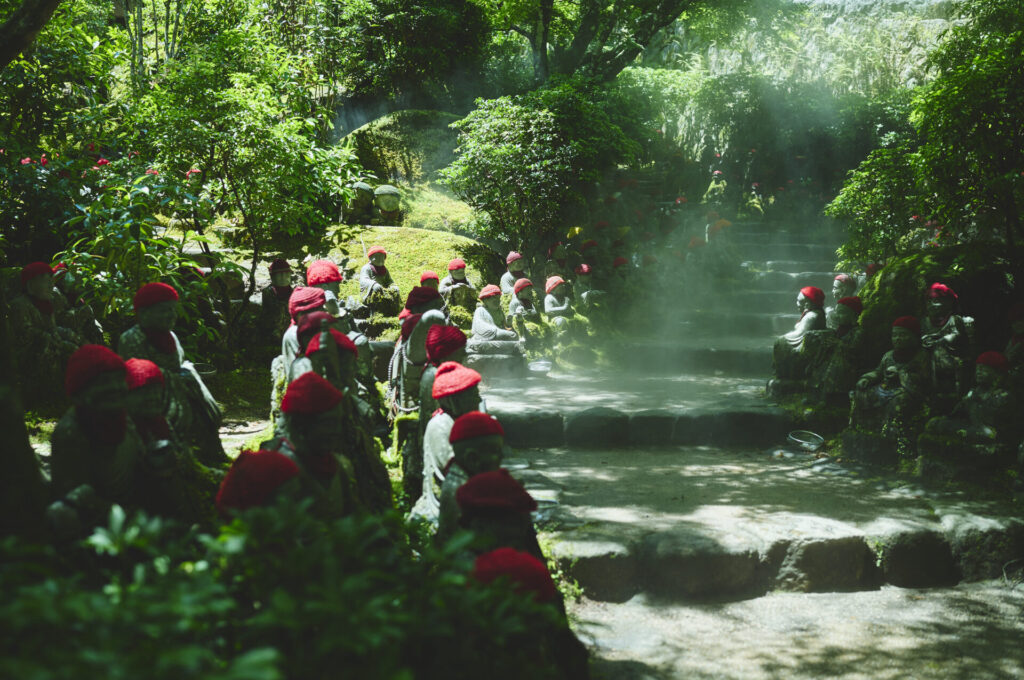
Even so, the question remained:
Why do temples exist? Why become a monk? What does it mean to inherit Daisho-in?
Seeking answers, Yoshida moved to Tokyo for university, majoring in business administration. There he joined Terakoya Kamakura, an NPO founded by psychiatrist Shigekazu Morishita that revives the old “temple-school” model. The group supports children through interaction not only with parents but also with diverse adults in the community, nurturing emotional and social growth.
“Seeing people my age so full of life in that setting inspired me,” he says. “During the 2011 Great East Japan Earthquake, I joined relief activities through Terakoya and felt the joy of helping others with my own hands.”
After graduation, Yoshida continued working with the organization while exploring his own path. Then one day he learned his father would soon leave Miyajima for training—and that someone would need to take his place.
That was when I finally made my decision—to return home and continue the temple’s lineage.”
Leaving Tokyo, he entered rigorous training at Ninna-ji Temple in Kyoto, the head temple of the Shingon Omuro sect.

“I was deeply moved by the monks who prayed sincerely for others,” he recalls. “At the same time, I learned that self-discipline is essential. Training lasts a hundred days, repeating the same rituals three times a day. Even if you fall ill or face family misfortune, missing once means starting over. To complete it, you must manage your body, trust in your family’s well-being, and keep praying.
Through that process I felt the profound wisdom of Kobo Daishi’s teachings—and realized this is truly my calling.”
A Temple as a Public Institution — Making It Accessible to Everyone
After completing his training at Ninna-ji, Yoshida returned to his birthplace, Miyajima.
The first thing that struck him was the majesty of Daisho-in itself — and the quiet beauty of Mount Misen, standing protectively behind it. The very environment he once resisted now filled him with awe and gratitude.
That was the beginning of his path as Vice Chief Priest.

“Daisho-in sits deep within the island, the farthest temple from the ferry terminal,” he explains. “From the Nio Gate at the entrance, visitors must climb more than a hundred stone steps. So I always ask myself — what can we do as a temple to make people who’ve come all this way feel, ‘I’m glad I visited. I want to come back.’ Fortunately, my father, the head priest, trusts me and lets me try new ideas freely.”
Under Yoshida’s guidance, Daisho-in has become a place where both spiritual practice and creativity coexist. Visitors can join monks for guided tours that explore the temple’s long history or experience goma fire rituals on Mount Misen, connecting directly with the teachings of Kobo Daishi. But Yoshida’s vision reaches further.
He also invites artists, musicians, and creators—from collage artists and filmmakers to DJs and sound designers—to hold collaborative events within the temple grounds. At times, Daisho-in and Mount Misen transform into a stage where ancient spirituality and modern art merge. Local residents are also welcomed to use the temple as a venue to present their own work or community projects.

“Some people are surprised and say, ‘I can’t believe such things happen at an ancient temple!’ But my purpose is clear,” Yoshida says.
“In the past, visiting temples was part of everyday life. Now it’s not. So our first step must be to plant seeds — to create opportunities for people, even those without religious ties, to simply come and feel.
If visitors from far away experience something meaningful here and bring that memory home, it may inspire them to visit their local temples — or even start new initiatives there.
The events we hold at Daisho-in aren’t just for ourselves; they’re part of a wider cycle of connection.”
Through social media and creative outreach, Yoshida continues to experiment with ways to make the temple’s spirit more approachable. Yet his foundation remains traditional:
“Temples were originally public institutions — places where people gathered to learn, celebrate, and share knowledge. They belonged not to priests, but to the community. If a hundred or a thousand years from now the local people no longer need us, the temple will simply disappear.
That’s why the real question is whether we are truly rooted in the community — whether we are needed.”
In the Yoshida family, there is an unspoken rule: “When people come to you with a sincere request, never say no. Instead, find a way to make it happen.”
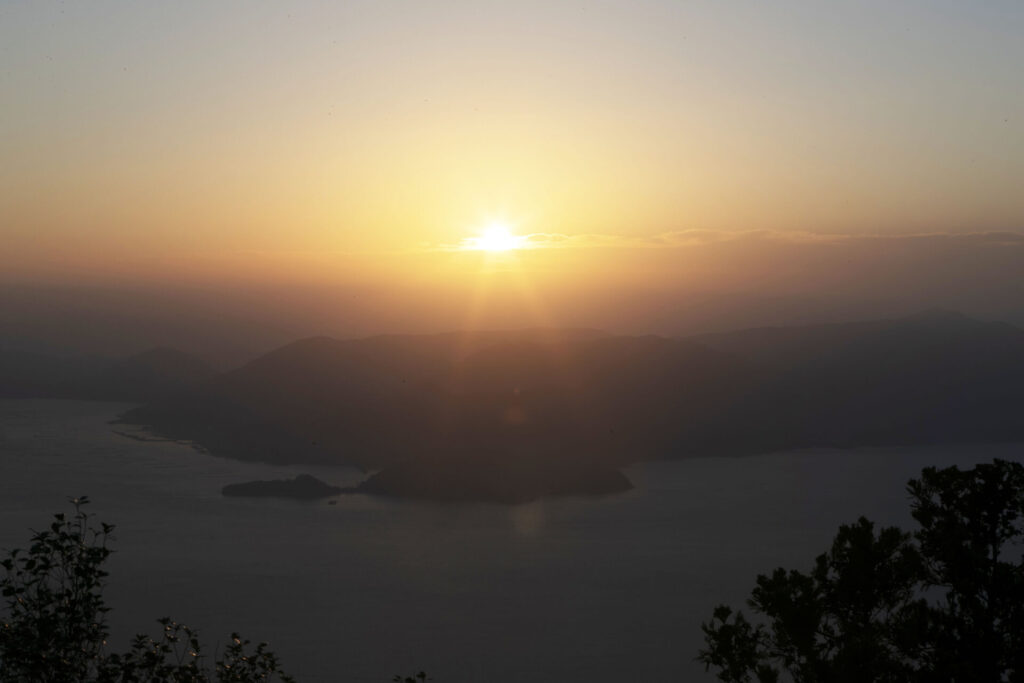
That philosophy — of openness and service — is their way of sowing seeds for the future.“When I was in high school, His Holiness the 14th Dalai Lama visited Daisho-in and stayed here,” Yoshida recalls. “He told me, ‘No matter the outcome, continue doing what you believe is good.’ Those words have stayed with me ever since.”
What Do You Hope to Pass On to the Future?
When asked what he hopes to carry into the future, Yoshida answers without hesitation:
“It would be the teachings of Kobo Daishi (Kukai). Even though he lived more than 1,200 years ago, his words hold profound meaning for the world we live in today.”
He explains that Kobo Daishi taught about the essence of humanity — the importance of awareness, compassion, and interconnectedness.
“One of his meditations compares the human heart to a full moon. You begin by imagining a radiant moon expanding until it surrounds you completely. Then, you widen that circle to include your family and friends, then the people in your community, and finally, all beings on Earth.
Through this meditation, you realize that we all share the same planet, that we are all connected, and that each of us deserves to be treated with love.
If more people could share that awareness, even for a moment, wars might stop. More people might begin to pray — and act — not just for themselves, but for everyone.”
Yoshida smiles softly.
“There are still so many seeds I want to sow. I’m always thinking about what kind of seeds I can plant — the kind that will grow into peace, understanding, and gratitude.”
In Yoshida’s daily practice — translating ancient teachings into modern compassion — one can glimpse the boundless potential of a temple.
His quiet work of sowing seeds connects prayer with peace, reminding us that sometimes the most powerful act isn’t to raise a weapon, but simply to bring our hands together.
